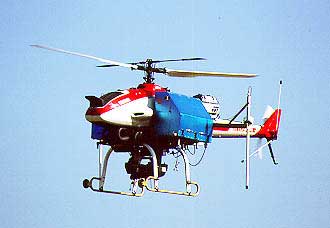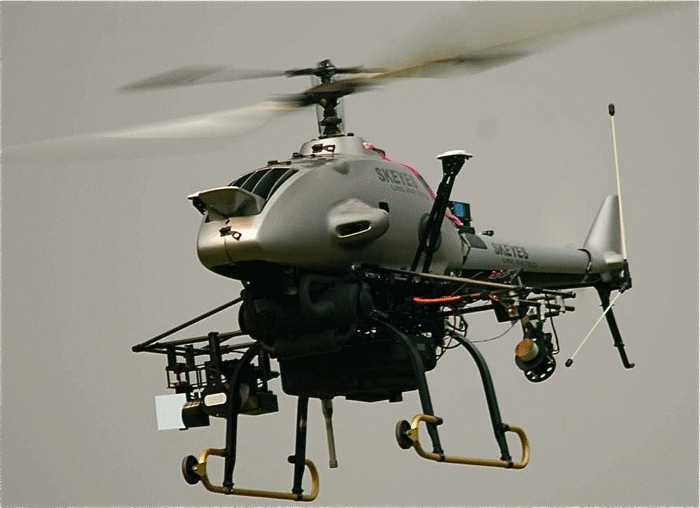

by Charles Owens on 12/31/2010
What is a UAV? It is an Unmanned Aerial Vehicle (UAV) and ever since the strife in the Middle East started you have been hearing a lot about them. In the past, UAV’s were the sole domain of the U.S. Military, but now Yamaha has unveiled a range of Unmanned Aerial Vehicles that brings the cost of UAVs down, and make it possible for corporations and universities to perform tasks which were previously too expensive. Volcanic eruptions, flood control, river bank maintenance and even crop dusting have joined spying as major uses of UAVs.
Yamaha’s development of unmanned helicopters began in 1983 when the Japanese Ministry of Agriculture, Forestry and Fisheries wanted an unmanned helicopter for crop dusting. Yamaha completed its first utility-use unmanned helicopter, the R-50 in 1987. It had 20 kg (44 pound) payload.
The absolute base-model airframe (suitable for agriculture), with a single GPS and the ability to fly only within sight, and no more than five yards above the ground costs $86,000. The Aerial Photography version can fly up to 100 yards above the ground and costs between $150,000 and $230,000.
The fully autonomous Yamaha R-Max with ground station, antennas, computers, monitors and two complete autonomous airframes and a four camera system runs $1,000,000.00. With the million dollar helicopter the pilot can watch what’s happening from all four cameras at once while the RMAX goes about the flight plan it has been programmed with from the controlling computer. If the operator sees something they want to look at closely, they can override the plan to get closer and then resume the original flight plan or program a new one.
It Is fast sleek and small. Well, it Is not that small.
The Yamaha RMAX helicopter powered by a liquid-cooled, two-stroke, 246cc engine rated at 21hp. It is capable of covering a distance of about 10 kilometers or a flight time of 90 minutes (with a 30 kg effective load capacity). Mounted on the helicopter itself are an altitude sensor, a GPS (Global Positioning System) sensor and a communications modem. Observation equipment, consisting of a digital camera and a digital still camera, are mounted along with three miniature video cameras for navigation purposes. Images from these cameras are sent from the helicopter to the ground station on a real time basis, where they are viewed on a four-window split screen monitor.
The Yamaha RMAX Autonomous Helicopter flies in accordance with a flight plan that has been programmed in the YACS (Yamaha Attitude Control System) and the RTK-DGPS (real-time kinematic differential GPS) system. Thus, an operator can fly the RMAX to places beyond the line of sight, and control its position by making intricate movements in a precise manner. The GPS enables the operator to monitor the flying speed and ensure that the RMAX flies precisely at the controlled speed. The RMAX can accommodate a still camera or video camera for observation purposes, or a compact camera for navigation purposes onboard. Thus, the operator will be able to obtain information on a real-time basis. The images captured by a camera can be transmitted, so that they can be monitored simultaneously on land.
It has been rumored that the Chinese stole the technology of the RMAX to build their own spy UAV.